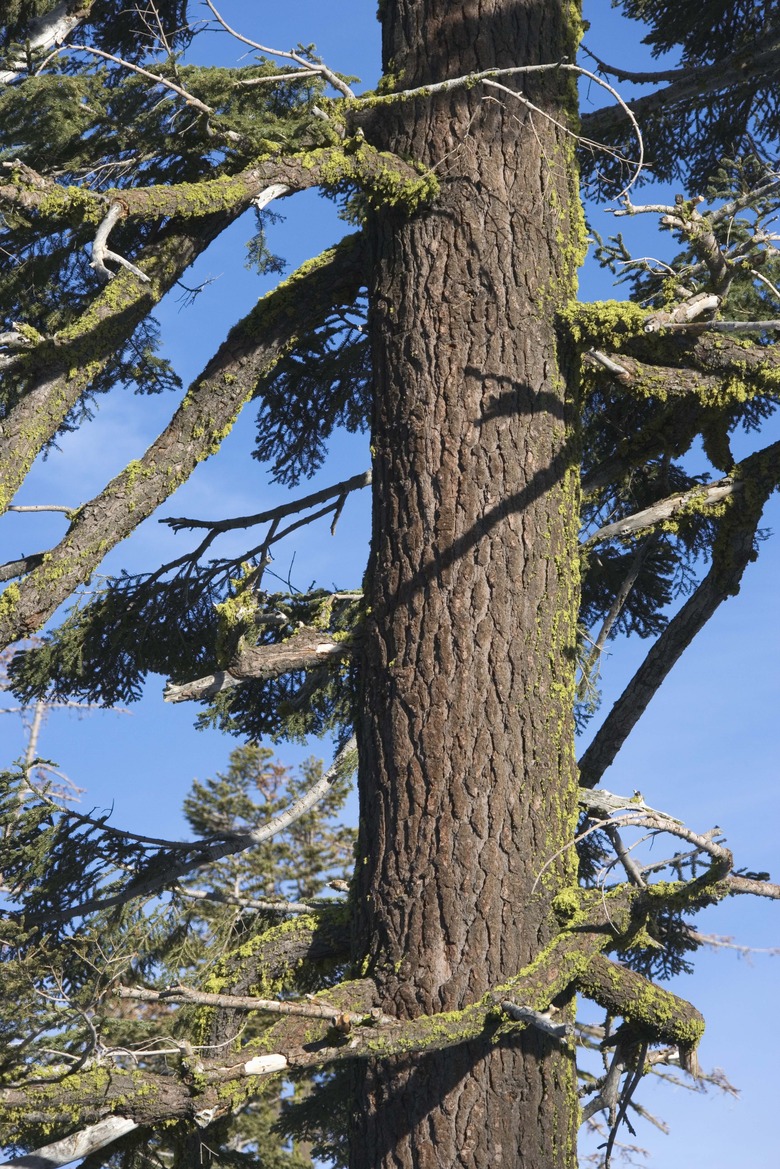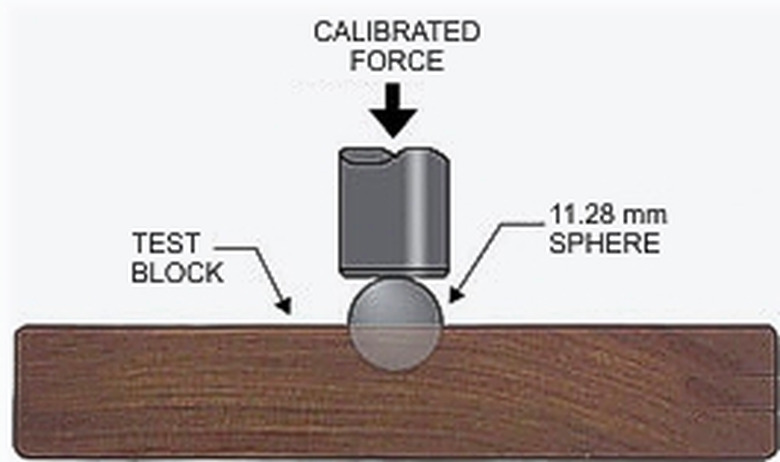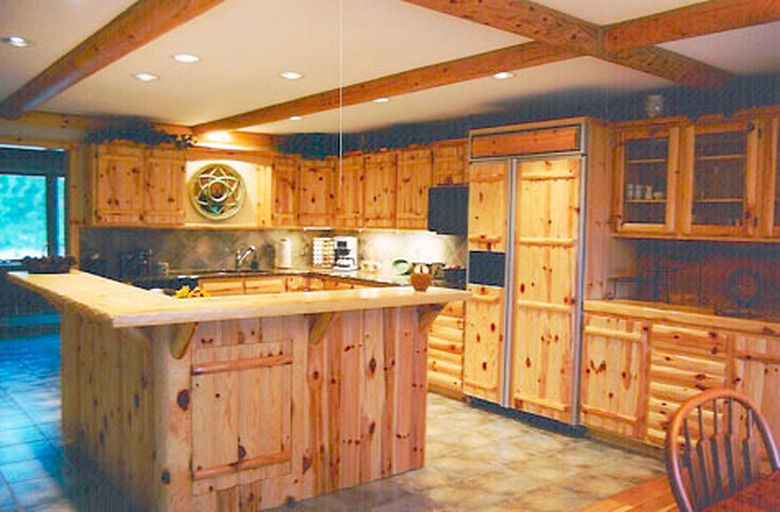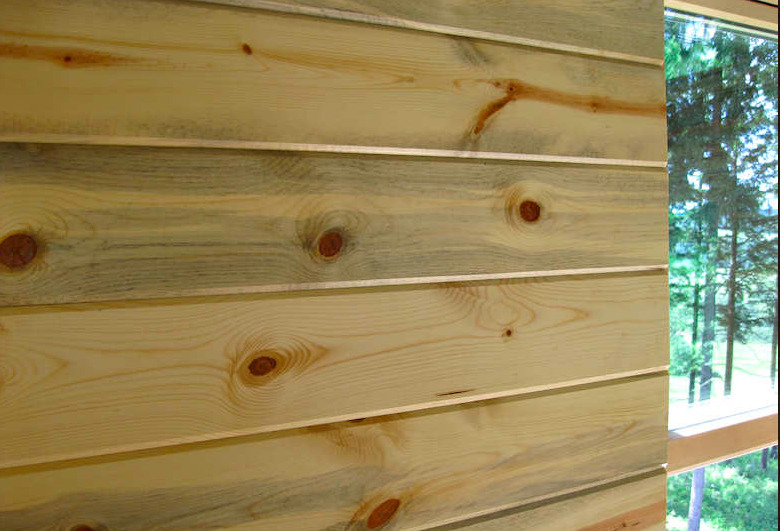Is Pine A Hardwood?
Pine is not a hardwood. It comes from a coniferous tree, which is one that has needles instead of leaves and is green all year round—in other words, an evergreen. The wood from conifers is classified as softwood because, with a few exceptions, it's softer than the wood from deciduous trees, which is classified as hardwood.
In the world of building materials, you can compare pine to a hardwood such as oak by thinking of it as a helicopter in relation to a commercial airliner. Both can fly, but if you want to cross the Atlantic, you wouldn't do it in a helicopter. However, a helicopter is a better choice for short-distance flight. In the same way, if your interest is lasting, durable construction, you wouldn't choose pine over oak, maple or even a harder softwood, such as Douglas fir. However, pine is a great choice for light construction, including cabinets, interior woodwork and sometimes even floors.
Not all pine species are equally soft, and some species can even rival hardwoods for durability. However, the most common commercial species in the United States—eastern white pine, sugar pine and western white pine—have hardness ratings well below those of most hardwoods.
How Hard Is Hard?
How Hard Is Hard?
Wood producers rank the hardness of wood species on the Janka scale, which relies on a simple test. In this test, a hydraulic press compresses a 1/2-inch steel ball roughly 1/2-inch in diameter into a specimen of a wood species, and the force required to do this is taken as a measure of the hardness of the species. The hardness ranking is known as the Janka scale, which extends from 100 to 4,500 pounds of pressure. Balsa (100)—which is ironically a hardwood—is at the bottom of the scale while lignum vitae (4,500), a tropical hardwood, is at the top.
Most pine species have a Janka rating between 300 and 1,000 pounds, but two—heart pine (1,255) and Caribbean pine (1,240)—score in a range that compares with some hardwood species. Eastern white pine (380), western white pine (420) and sugar pine (380) rank at the bottom of pine species and near the bottom of the hardness scale in general. All three are unusually soft species. Other available pine species aren't much harder. Ponderosa pine scores 460, lodgepole pine scores 480 and jack pine scores 570.
If Pine Is so Soft, Why Do Builders Use It?
If Pine Is so Soft, Why Do Builders Use It?
You find pine in use as decking boards, floorboards and furniture. It's also the go-to material for interior moldings and baseboards. If pine is so soft, why is it such a common building material? There are at least three reasons:
- Pine is abundant. Loblolly pine (680 lb.) is the second most common tree in North America, and lodgepole pine, the ninth most common. Pine is more common in the Eastern part of North America than the West, but it grows at most elevations and in most climates, and it's easy to harvest. That makes it inexpensive. When Europeans settled America, most of what they built was made from pine.
- It's workable. Softness has its advantages for carpenters and builders. Pine is easy to cut and work, and its durability can be enhanced by chemical treatment. Untreated pine succumbs quickly to rot and insects, but pressure-treated pine can be tough enough for decking boards and other outdoor construction.
- It's attractive. Pine has an open grain and displays colors from ivory white through raw sienna to burnt sienna. It also takes stain well when properly conditioned. Pine boards are often knotty, but the knots add to their appeal when used for interior paneling or cabinetry. Pine moldings and baseboards are often clear finished or left unpainted altogether to capitalize on pines homegrown appearance.
How to Purchase Pine Lumber
How to Purchase Pine Lumber
Douglas fir is a comparatively soft species abundant primarily in the west, and it is the material most builders use for construction there. In the east, however, it's pine. Builders in all regions use pine for trim, moldings, cabinetry and interior decorating. Suppliers grade pine according to appearance and structural strength, and it's important to purchase the grade suitable for your purpose:
- Select. The top grade, select pine boards are free of knot and blemishes and are generally a uniform color. This is the most expensive grade, but it's the one you should choose for cabinetry. Besides enhancing appearance, the absence of knots makes the wood more stable and less likely to warp.
- Common. Less expensive than select, the common grade includes boards ranging from those with slight blemishes to those with frequent knots and blemishes. Choose from this grade if you're installing knotty pine paneling or doing lightweight utility construction.
- Construction. Boards in the construction grade do not meet the appearance requirements to be classified as common, so they are even less expensive. They may have knots, sap veins and other blemishes, but they are still structurally sound. This grade is the one from which pressure-treated boards are manufactured. Stud grade is a subset, consisting of boards that are stable enough to be milled into 2 x 4s for structural framing.



